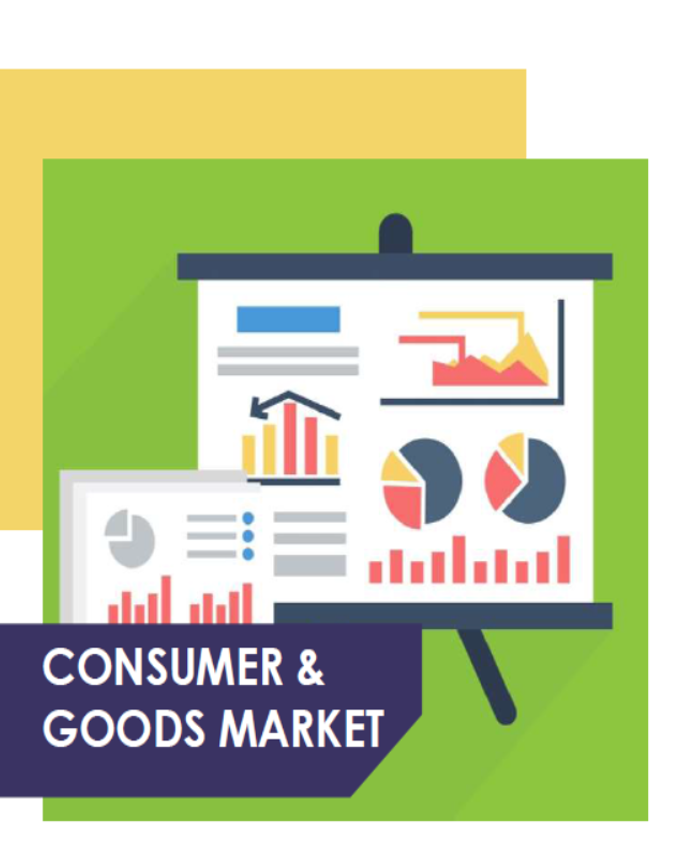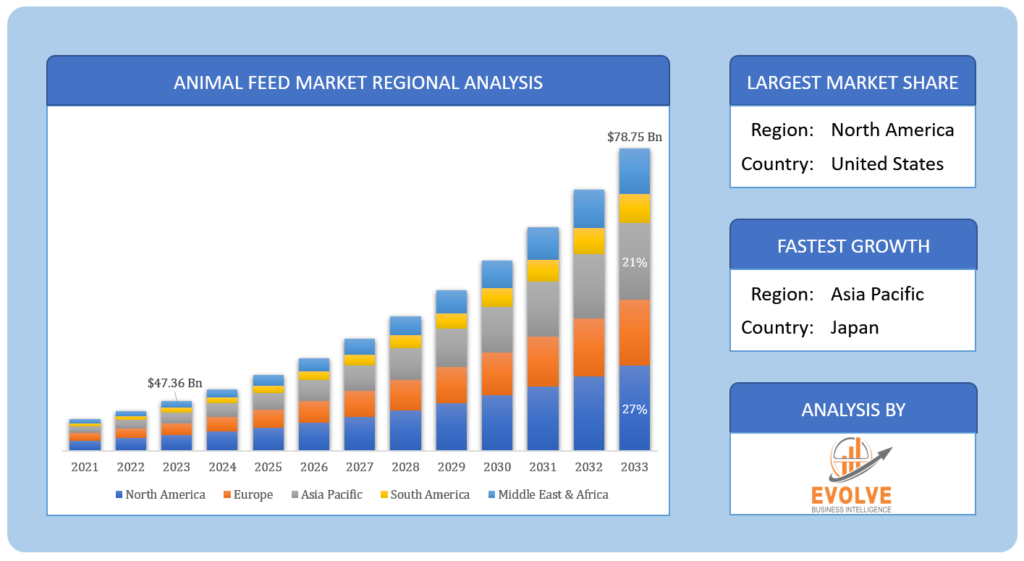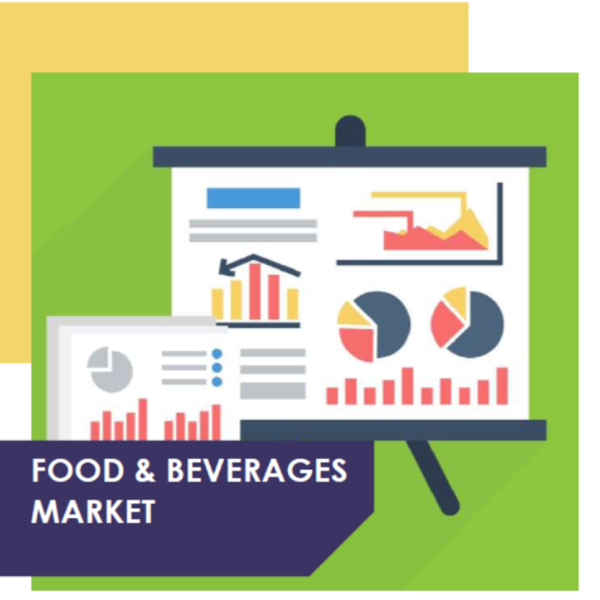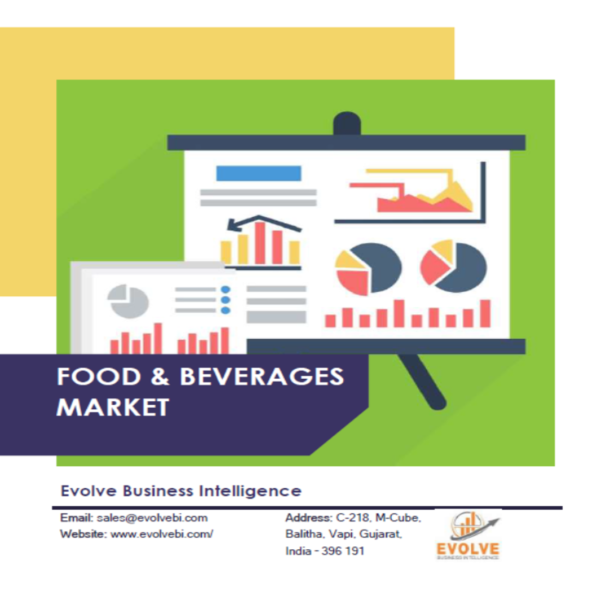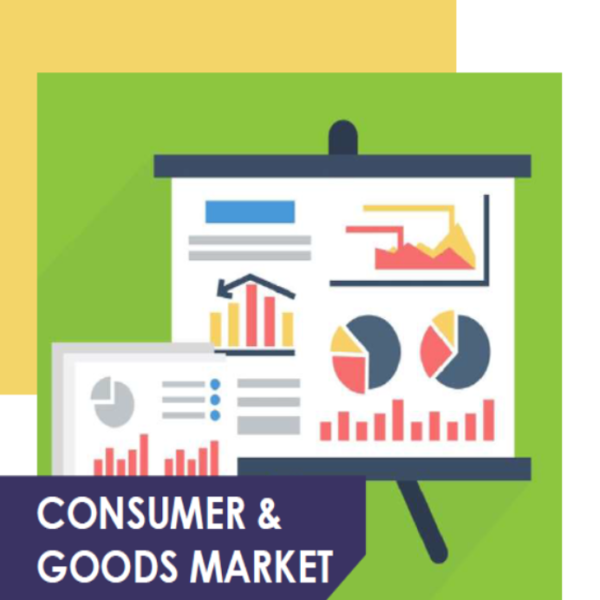Animal Feed Market Overview
The Animal Feed Market Size is expected to reach USD 47.36 Billion by 2033. The Animal Feed industry size accounted for USD 78.75 Billion in 2023 and is expected to expand at a compound annual growth rate (CAGR) of 4.86% from 2023 to 2033. Animal feed refers to a nutritionally balanced mixture of various ingredients, such as grains, protein sources, vitamins, minerals, and additives, formulated to provide essential nutrients for domesticated animals and livestock. It serves as a primary source of sustenance, supporting their growth, health, and productivity. Animal feed comes in various forms, including pellets, powders, and granules, tailored to meet the specific dietary requirements of different animal species and production stages. Properly designed and regulated animal feed plays a critical role in ensuring the well-being and optimal performance of animals, enhancing their ability to produce meat, milk, eggs, or other animal-derived products efficiently and sustainably.
Global Animal Feed Market Synopsis
The COVID-19 pandemic had a profound and lasting impact on the Animal Feed market. The disruption caused by the pandemic in global supply chains, transportation, and labor availability led to fluctuations in feed ingredient prices and availability. Lockdowns and restrictions affected feed production and distribution, causing challenges in maintaining the supply chain for livestock and poultry farmers. Additionally, changes in consumer behavior and food demand patterns during the pandemic influenced the composition and demand for animal feed, with some sectors experiencing increased demand (e.g., pet food) while others faced reduced consumption (e.g., feed for animals in the hospitality industry). Despite these challenges, the pandemic also highlighted the importance of resilient and sustainable supply chains, accelerating investments in advanced technologies and innovations in the animal feed industry to enhance production efficiency and adaptability for future disruptions.
Global Animal Feed Market Dynamics
The major factors that have impacted the growth of Animal Feed are as follows:
Drivers:
⮚ Growing Global Population and Rising Demand for Animal Protein
As the global population continues to grow, so does the demand for animal protein, such as meat, dairy, and eggs. This increasing demand for animal-based products drives the need for high-quality and nutritionally balanced animal feed to support livestock and poultry production, creating a significant driver for the Animal Feed market.
Restraint:
- Fluctuating Prices of Feed Ingredients
The Animal Feed market faces the restraint of fluctuating prices of feed ingredients, such as grains, oilseeds, and other essential nutrients. Market volatility, climate-related factors, and geopolitical events can impact the availability and cost of feed ingredients, leading to unpredictable expenses for feed manufacturers and livestock farmers.
Opportunity:
⮚ Rising Focus on Sustainable and Healthy Feed Solutions
There is a growing opportunity in the Animal Feed market for sustainable and healthy feed solutions. Consumers’ increasing awareness of animal welfare, environmental sustainability, and food safety has encouraged the development and adoption of feed formulations that reduce the environmental footprint, incorporate alternative protein sources, and enhance animal health and performance, aligning with the principles of responsible and ethical farming practices.
Animal Feed Market Segment Overview
By Type
Based on the Type, the market is segmented based on Acidifiers, Probiotics, Enzyme, Antioxidants, Antibiotics, Amino Acids, Vitamins, Minerals, and Others. The Acidifiers segment was projected to hold the largest market share in the Animal Feed market due to their potential to improve feed efficiency, promote growth, and support animal health by maintaining a balanced gastrointestinal pH and preventing the growth of harmful bacteria in the digestive tract.
By Form
Based on the Form, the market has been divided into Pellets, Crumbles, Mash, and Others. The Pellets segment is expected to hold the largest market share in the Animal Feed market due to their convenience, better feed conversion rate, reduced feed wastage, and improved storage and handling properties making them a preferred choice for efficient and cost-effective animal feeding.
By Species
 Based on Species, the market has been divided into Swine, Ruminants, Poultry, Aquaculture, and Others. The Swine segment is expected to hold the largest market share in the Animal Feed market due to the high demand for specialized and nutritionally balanced feed formulations to support the growth and productivity of swine in the global pork industry.
Based on Species, the market has been divided into Swine, Ruminants, Poultry, Aquaculture, and Others. The Swine segment is expected to hold the largest market share in the Animal Feed market due to the high demand for specialized and nutritionally balanced feed formulations to support the growth and productivity of swine in the global pork industry.
Global Animal Feed Market Regional Analysis
Based on region, the market has been divided into North America, Europe, Asia-Pacific, the Middle East & Africa, and Latin America. The area of North America is anticipated to dominate the market for the usage of Animal Feed, followed by those in Asia-Pacific and Europe.
 North America Market
North America Market
North America has consistently maintained a significant market share in the Animal Feed market due to several factors. Firstly, the region’s large and well-developed livestock and poultry industries drive substantial demand for animal feed to support the production of meat, dairy, and other animal-based products. Secondly, the region’s advanced agricultural practices and high adoption of technological innovations have led to increased productivity and efficiency in feed production. Additionally, a growing focus on animal health, welfare, and nutrition has spurred the demand for premium and specialized feed formulations. Furthermore, North America’s stable and well-regulated food safety standards have encouraged the use of high-quality and safe feed ingredients, further boosting the market’s growth. Overall, the region’s dynamic and diverse agricultural landscape, coupled with a strong commitment to sustainable and responsible farming practices, continues to position North America as a key player in the global Animal Feed market.
Asia Pacific Market
The Animal Feed industry in the Asia-Pacific region has been witnessing remarkable growth in recent years. The region’s increasing population, rising income levels, and shifting dietary preferences towards animal-based protein have fueled the demand for livestock and poultry products. As a result, there is a growing need for nutritionally balanced and cost-effective animal feed to support the expansion of the livestock industry. Additionally, rapid urbanization and industrialization have led to advancements in animal husbandry practices, driving the adoption of modern feed technologies and management systems. Moreover, favorable government policies, foreign investments, and collaborations with global feed manufacturers have further contributed to the industry’s growth in the Asia-Pacific region. With a strong focus on sustainable and efficient animal production, the region’s Animal Feed market is expected to continue its upward trajectory, catering to the increasing demand for safe and high-quality animal-derived products.
Competitive Landscape
The competitive landscape includes key players (tier 1, tier 2, and local) having a presence across the globe. Companies such as Adisseo, Ajinomoto Co Inc, ADM, BASF SE, and BIOMIN Holding GmbH are some of the leading players in the global Animal Feed Industry. These players have adopted partnership, acquisition, expansion, and new product development, among others as their key strategies.
Key Market Players:
- Adisseo
- Ajinomoto Co Inc
- ADM
- BASF SE
- BIOMIN Holding GmbH
- Cargill, Incorporated
- Hansen Holding A/S
- DuPont
- DSM
- Elanco
Key development:
In January 2022, ADM launched an Aquaculture Innovation Lab at the Animal Nutrition Technology Centre (ANTC) based in Decatur, Illinois. This addition complements ADM’s existing aquaculture research facilities in Brazil, Mexico, and Vietnam, extending the company’s global research and development capabilities to a new domain. The newly established lab aims to enhance efforts in developing state-of-the-art nutrition solutions on a global level, further reinforcing ADM’s commitment to innovation in the aquaculture industry.
Scope of the Report
Global Animal Feed Market, by Type
- Acidifiers
- Probiotics
- Enzyme
- Antioxidants
- Antibiotics
- Amino Acids
- Vitamins
- Minerals
- Others
Global Animal Feed Market, by Form
- Pellets
- Crumbles
- Mash
- Others
Global Animal Feed Market, by Species
- Swine
- Ruminants
- Poultry
- Aquaculture
- Others
Global Animal Feed Market, by Region
- North America
- US
- Canada
- Mexico
- Europe
- UK
- Germany
- France
- Italy
- Spain
- Benelux
- Nordic
- Rest of Europe
- Asia Pacific
- China
- Japan
- South Korea
- Indonesia
- Austalia
- Malaysia
- India
- Rest of Asia Pacific
- South America
- Brazil
- Argentina
- Rest of South America
- Middle East & Africa
- Saudi Arabia
- UAE
- Egypt
- South Africa
- Rest of Middle East & Africa
| Parameters | Indicators |
|---|---|
| Market Size | 2033: $47.36 Billion |
| CAGR | 4.86% CAGR (2023-2033) |
| Base year | 2022 |
| Forecast Period | 2023-2033 |
| Historical Data | 2021 |
| Report Coverage | Revenue Forecast, Competitive Landscape, Growth Factors, and Trends |
| Key Segmentations | Type, Form, Species |
| Geographies Covered | North America, Europe, Asia-Pacific, Latin America, Middle East, Africa |
| Key Vendors | Adisseo, Ajinomoto Co Inc, ADM, BASF SE, BIOMIN Holding GmbH, Cargill, Incorporated, Chr. Hansen Holding A/S, DuPont, DSM, Elanco |
| Key Market Opportunities | • Growing focus on sustainable and healthy feed solutions to meet consumer demand for responsible and ethical farming practices. |
| Key Market Drivers | • Increasing global demand for animal-based protein products leads to a rising need for high-quality and nutritionally balanced animal feed. |
REPORT CONTENT BRIEF:
- High-level analysis of the current and future Animal Feed Industry trends and opportunities
- Detailed analysis of current market drivers, restraining factors, and opportunities analysis in the future
- Historical market size for the year 2021, and forecast from 2023 to 2033
- Animal Feed market share analysis for each segment
- Competitor analysis with a comprehensive insight into its product segment, financial strength, and strategies adopted.
- Identifies key strategies adopted by the key players including new product development, mergers and acquisitions, joint ventures, collaborations, and partnerships.
- To identify and understand the various factors involved in the global Animal Feed market affected by the pandemic
- To provide year-on-year growth from 2022 to 2033
- To provide short-term, long-term, and overall CAGR comparison from 2022 to 2033.
- Provide Total Addressable Market (TAM) for the Global Animal Feed Market.

